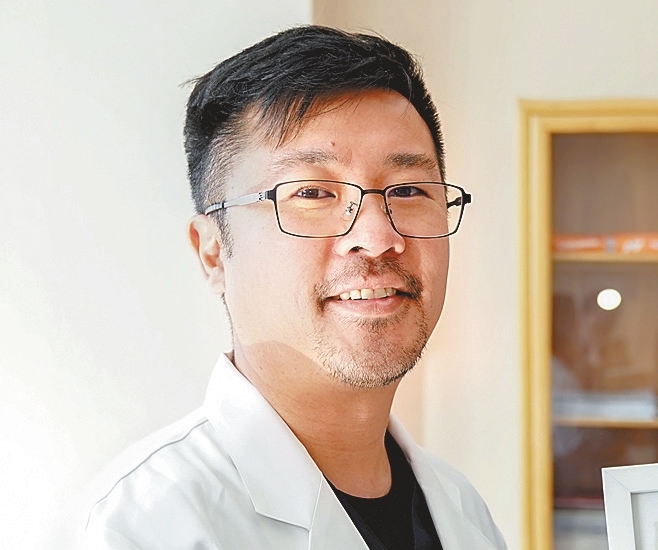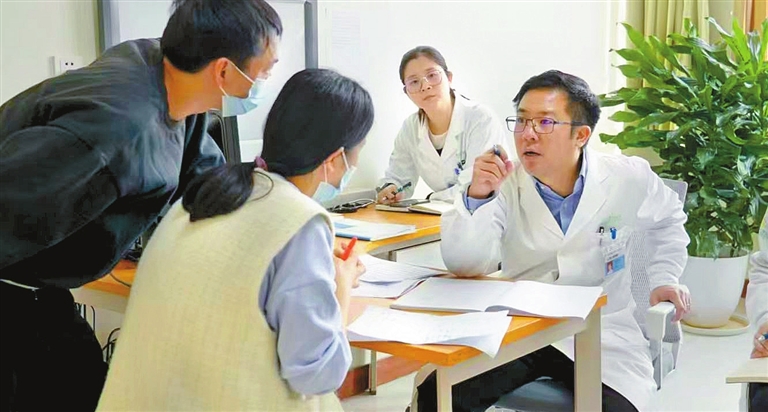


Editor’s note: From May 12 to 14, the China Pavilion at Expo 2025 Osaka will host “Shenzhen Week.” To mark this occasion, Shenzhen Daily and EyeShenzhen, a multilingual information and news platform, are publishing a special series of articles about Japanese people in Shenzhen. The collection features diverse perspectives and unique “Shenzhen Stories” from Japanese corporate executives, chamber of commerce leaders, entrepreneurs, educators, and community volunteers. This is the third story. Lian Jiaqi 403950598@qq.com SHIMIZU SHOSEI, former attending physician at the Proton Therapy Center of the University of Tsukuba Hospital in Japan, now regards Shenzhen as his second hometown. As an expert on proton therapy for pediatric tumors, Shimizu is driving breakthroughs in, and the popularization of, proton therapy technology in China. His bond with Shenzhen began through Shenzhen and Tsukuba’s sister-city relationship. Years ago, while hosting a Shenzhen medical delegation, he became deeply impressed. “They asked about every detail of proton therapy, and their urgent determination to improve medical standards really moved me,” he recalled. In 2023, he came to Shenzhen to work at Cancer Hospital Chinese Academy of Medical Sciences, Shenzhen Center. “China is the fastest-growing and the most dynamic and vibrant country in Asia. I am eager to contribute to the development of proton therapy in Shenzhen and China,” he said. Proton therapy precisely targets tumors with millimeter accuracy by delivering a concentrated dose of radiation that stops at the tumor site, largely sparing healthy tissues beyond it. This unique property makes it especially suitable for children, significantly reducing harm to developing organs and tissues compared to conventional radiotherapy, which delivers radiation along its entire path through the body. While proton therapy is a very beneficial technology, its widespread adoption faces global challenges such as high equipment costs and demanding technical requirements. Shimizu believes Shenzhen’s fast-paced environment is the key to overcoming these barriers. “Here, decisions are made quickly and resources are integrated efficiently. Several hospitals in Shenzhen are already planning proton centers. The next step is for the government, hospitals, and enterprises to jointly address the long-term investment needed.” “People always want immediate results, but the global adoption of proton therapy requires five to 10 years of patience,” he admitted. He highlighted three major challenges for developing proton therapy in China: professional development, medical insurance, and standardization. To increase the number of qualified professionals in the field, Shimizu is advocating for a China-Japan training system that would see Chinese doctors go to Japan for advanced learning and training. To overcome insurance challenges, he has recommended exploring a combined commercial-public health insurance model to alleviate the financial burden on patients. Lastly, to ensure overall industry quality, Shimizu believes that regulations should be created to ensure that every process, from equipment maintenance to safety management, meets international standards. As a vital bridge for medical collaboration between China and Japan, Shosei looks forward to the upcoming Osaka Expo because it serves as a platform for technology sharing. “The Expo’s theme is ‘Designing Future Society for Our Lives,’ and proton therapy embodies this perfectly.” He advocates for joint China-Japan efforts in developing low-cost proton therapy technologies, emphasizing, “True accessibility means benefiting more children.” From Tsukuba to Shenzhen, Shosei’s compassionate dedication transcends borders. In his eyes, Shenzhen’s innovative DNA and pragmatic spirit provide the ideal environment to cultivate a uniquely “Chinese model” of proton therapy — one poised to make a lasting impact on pediatric cancer care. | 
